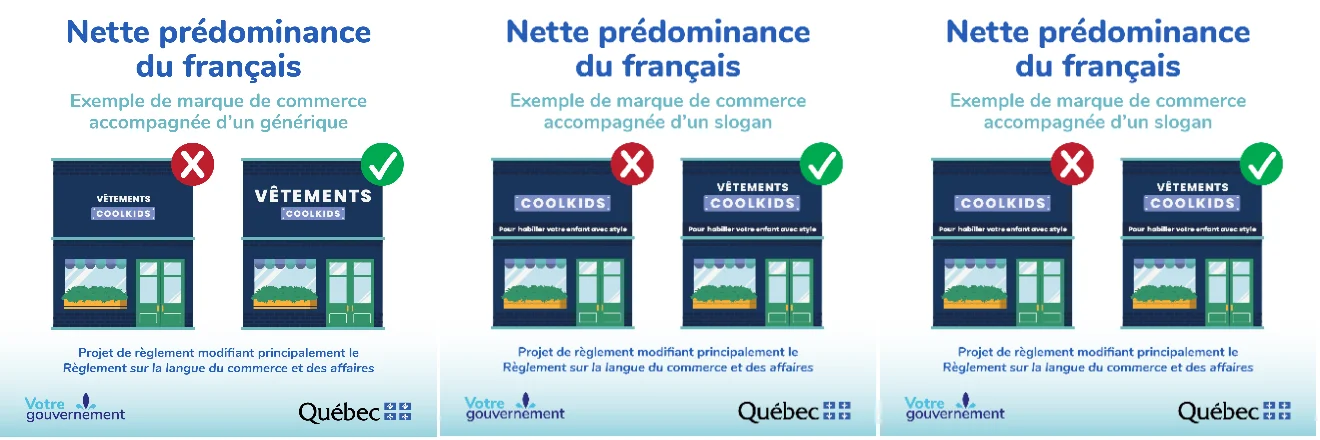Source: Quebec Office of the French Language (OQLF)
As of June 1, 2025, significant changes will come into effect in Quebec regarding the use of trademarks in languages other than French, under Bill 96, which amends the Charter of the French Language. These changes aim to strengthen the presence of French in businesses and ensure that French clearly predominates in commercial matters. Here is a comprehensive guide to understanding these new rules and avoiding costly penalties.
1. Mandatory registration of foreign language trademarks
One of the most significant changes concerns the use of trademarks in a language other than French. As of June 1, 2025, a trademark written solely in a foreign language may be used in Quebec only if:
- It is registered with the Canadian Intellectual Property Office (CIPO) .
- No corresponding French version is registered in the trademark register.
This means that unregistered or pending trademarks will no longer benefit from the exception allowing their exclusive use in a foreign language. For example, a trademark such as « Tech Solutions » will have to be registered for use in English only, unless an equivalent French version such as « Solutions Technologiques » is also registered.
2. Mandatory translation of descriptive and generic terms
Even if a trademark is duly registered in a foreign language, the generic or descriptive terms it contains must be translated into French on the product or on a permanent medium.
- Common examples :
- « Toothpaste » should be accompanied by « Toothpaste ».
- « Mint Flavor » should be translated as « Mint Flavor ».
- « Whitening » should be accompanied by « Blanchissant ».
This rule applies not only to packaging, but also to labels, user manuals and any other permanent media associated with the product.
3. Public displays and commercial advertising: clear predominance of French
The new rules also impose strict requirements regarding public displays and commercial advertising:
- French must be clearly predominant compared to other languages.
- The French text must have a much greater visual impact than the foreign language text, occupying at least twice as much space and being at least as legible and visible.
- This rule also applies to websites, commercial signs, billboards and any other promotional material visible to the public.
4. Transition period for non-compliant products
Businesses will have a transition period to comply with these new rules:
- Non-compliant products manufactured before June 1, 2025, may be sold until June 1, 2027, provided they are not modified after that date.
- However, this exception does not apply if a French version of the trademark has been filed in the trademark register on June 26, 2024 .
5. Sanctions for non-compliance
Companies that fail to comply with these new requirements are liable to administrative and criminal sanctions, including:
- Fines :
- From $700 to $7,000 for a first offense.
- From $1,400 to $14,000 for a repeat offense.
- For businesses, fines can be doubled if the offense is committed by a legal entity.
- Suspension of licenses :
- The Office québécois de la langue française (OQLF) can also recommend the suspension or revocation of business permits in the event of repeated non-compliance.
- Court orders :
- In the event of serious or repeated violations, the OQLF may request a court order to force the company to comply.
6. Recommendations for businesses
To avoid these sanctions, companies should:
- Check whether their foreign language trademarks are duly registered with CIPO.
- Translate descriptive and generic terms on products and packaging.
- Adapt their public displays and commercial advertising to comply with the new rules of predominance of French.
- Review their brand strategy to ensure long-term compliance.
- Plan now to avoid high last-minute compliance costs.
Conclusion
These new rules represent a major change for businesses operating in Quebec. To avoid costly penalties and maintain a good reputation in the market, it is essential to prepare now and implement strategies to comply with these new requirements.





